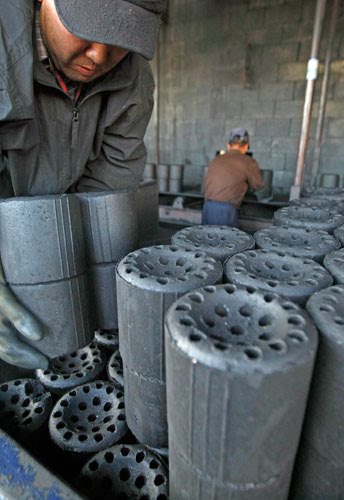goanin
ArboristSite Operative
(NOT a commercial!)
In the last decade there has been an increasing use of olive waste (Gefet) as heating fule, here in israel. It's basically the waste product that remains after you extract the oils from the olives. The olive waste hurts the environment because it is oily, and burying it is expensive.
Gefet is said to have been used as fule even earlier by druze people in the galilee. They swear that it has more heat than wood. But they usually burnt it wet, which probably produced a lot of smoke..
One Israeli company decided to use the waste (which is so unwanted it's given away for free) and make "logs" out of it, by compressing the Gefet without using any glue. The logs are then dried in the in the desert's sun, and they're good to burn. The product is patented, and the company strated to export it recently. The company claims that the Gefet contains more energy than similar sized wood, and that makes sense because the logs contain more fats rether than carbs. The Gefet logs don't burn with a fancy flame, and they do smoke..
Here's the company's home page, with a picture of the logs.
http://www.pil-coal.com/Default.aspx
What do you think?
In the last decade there has been an increasing use of olive waste (Gefet) as heating fule, here in israel. It's basically the waste product that remains after you extract the oils from the olives. The olive waste hurts the environment because it is oily, and burying it is expensive.
Gefet is said to have been used as fule even earlier by druze people in the galilee. They swear that it has more heat than wood. But they usually burnt it wet, which probably produced a lot of smoke..
One Israeli company decided to use the waste (which is so unwanted it's given away for free) and make "logs" out of it, by compressing the Gefet without using any glue. The logs are then dried in the in the desert's sun, and they're good to burn. The product is patented, and the company strated to export it recently. The company claims that the Gefet contains more energy than similar sized wood, and that makes sense because the logs contain more fats rether than carbs. The Gefet logs don't burn with a fancy flame, and they do smoke..
Here's the company's home page, with a picture of the logs.
http://www.pil-coal.com/Default.aspx
What do you think?
























































